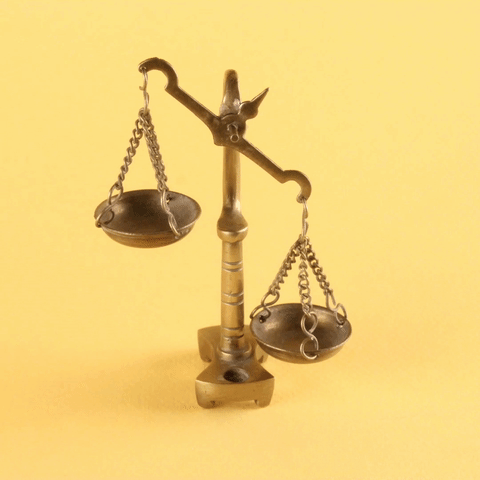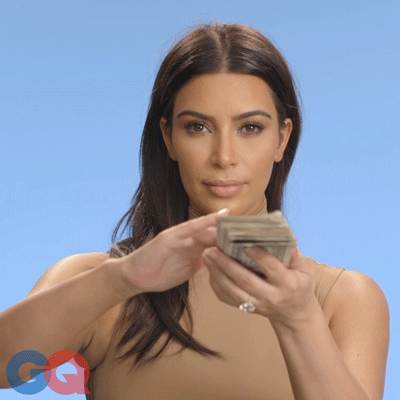7 Pro Tips That Can Get -And Keep- You Out Of Debt

Digging out of debt is a fairly common New Year’s resolution. The average consumer racked up $1,054 worth of debt during the 2017 holiday shopping season, according to a recent MagnifyMoney survey.
Even if you didn’t use credit to fund your holiday festivities, you may still have other types of debt you plan to finally get rid off in 2018 — like auto debt, student loan debt, or even that new iPhone you might have financed.
Becoming debt-free often requires a lot of effort and discipline. But it’s not impossible, especially if you find a good strategy for your needs. Here are some practical, research-proven tips you can use to make reaching your goal of being debt-free more attainable in the new year.
Tip #1: Pay off one account at a time

In a 2016 study published in the Journal of Consumer Research, a team of four researchers found that focusing on one debt at a time helped consumers pay off their debt more quickly than those who paid multiple debts at once.
The researchers tested the efficacy of paying one account at a time. Consumers were divided into two groups: one whose payments were distributed equally among their debts, while the other paid one account at a time.
They found that participants who used the concentrated repayment strategy “worked harder than those who dispersed their repayments” and repaid their debt 15% faster. Participants who used the concentrated strategy felt more motivated as well, as they “perceive greater progress toward their goal of getting out of debt,” which boosted the desire to succeed.
Tip #2: Start paying down debts with the smallest balance first

The same research also helped to finally settle the debate between two well-known debt repayment strategies — the debt snowball and the debt avalanche. Both methods agree on the concept of paying one balance off at a time but diverge on how to prioritize the debts.
The debt avalanche strategy advises debtors to prioritize debts by interest rate, focusing on paying down debts with the highest interest rate first. Hypothetically, by using this approach, the borrower saves the most money over time simply because they’re avoiding higher interest charges.
However, researchers found the debt snowball strategy works better in the long run. Borrowers are advised to order their debts from the smallest to the largest amount and tackle the lower debt first. The portion of the balance debtors succeed in paying off has the largest impact on their perception of progress, so people are more motivated when they begin with the smallest debt.
“To the extent that a consumer’s debt accounts have similar interest rates, he or she should concentrate repayments first on the cards or accounts with the smallest debts, paying off those first,” wrote Boston University researcher Remi Trudel in a 2016 Harvard Business Review article.
Trudel goes further to suggest consolidating multiple debts into one may actually weaken motivation and could slow repayment progress. However, debt consolidation may be helpful overall if consumers are able to greatly lower the interest paid on all of their debts through consolidation.
Tip #3: Set a no-plastic rule for transactions over $20

A 2017 joint study completed by Urban Institute, D2D Fund, and the Arizona Federal Credit Union, and funded by the Consumer Financial Protection Bureau (CFPB), found that by using cash for purchases under $20, consumers were able to lower the amount of credit card debt they carried over month to month. We’ve shared this tip with you before.
Revolving credit card debt can have a huge impact on your credit score and the cost of credit in general. The less month-to-month credit debt you carry, the better. Learn more about achieving an excellent credit score here.
You can borrow the CFPB’s rule as well. You don’t necessarily have to use the $20 limit, but it’s a solid starting place. Try keeping a $20 bill on you to prevent yourself from accumulating more debt while you work on paying it off. If a transaction falls under $20, you can use cash instead of swiping a credit card.
Urban Institute researchers monitored the habits of nearly 14,000 Arizona Federal Credit Union account holders identified as credit card revolvers — those who had carried a balance on their credit card for at least two out of the six months before the start of the study.
Researchers used two rules of thumb:
- Don’t swipe the small stuff: Use cash when it’s under $20
- Credit keeps charging: It adds approximately 20% to the total
The participants either received one of the two rules to follow, or they were placed in a control group. They were then reminded of the rule they were to follow via email, web portal banners, and refrigerator calendar magnets for six months in 2015.
They found participants who followed the first rule saw on average a 2% decrease in their Arizona Federal Credit card balances, compared to those in the control group. After six months, the $20 rule followers’ balances were on average $104 lower than they were prior to the study.
Tip #4: Set up accountability reminders

Getting someone (or something) to send you helpful reminders to pay down your debt can help you become more motivated to pay it off, according to a 2015 study by Clarifi, a nonprofit organization that provides consumers low-cost access to financial products and services.
Researchers worked with clients to test the effects of text messaging and peer support programs on their financial outcomes. The researchers randomly selected individuals to receive peer support, reminder text messages, or both.
Those offered peer support choose one to two peers to monitor their progress on a debt management plan. The peers they chose received updates on their progress and a notification when they missed a scheduled debt payment.
Participants who received text message reminders were subscribed to a messaging service they could opt out of. They received either task-oriented or goal-oriented messages, either bi-weekly (high frequency) or once a month (low frequency) and a week before each debt management payment was due.
Researchers found those who received bi-weekly task-oriented reminder messages were 6% more likely to be on track with their debt management plan and 8% more likely to have met their scheduled payment amount or completed the debt management plan in any given
month than clients who received no reminder messages.
You can mimic this effect by setting up bill pay reminders on your recurring monthly bills. You can download the mobile app for most banks, for example, and set a reminder to alert you when your bill is coming up or when a transaction is charged to your account. You can also use a number of mobile apps, like Clarity Money or Mint that will alert you if you are overspending in areas of your budget.
Tip #5: Treat all money the same

According to the mental accounting theory held among behavioral economists, when people treat money differently depending on how they receive it.
And that could be ultimately hurting your progress toward paying down debt.
For example, let’s say you always consider your tax refund as a means to pay for your annual vacation. Even if you have some credit card debt to pay down, you’re mentally designating your tax refund toward your vacation spending, overlooking the fact that you might be better off using that money to pay down your debt instead.
Or, you may not even consider taking your annual bonus and using it to pay off your auto loan, but instead, use the cash to buy yourself a new gadget because it seems like the kind of treat a bonus should be used for. You may be current on your auto payments and in no rush to pay off your vehicle, but that money could have been used to pay off the auto loan and save yourself a chunk of interest payments.
The trick is not to mentally allocate that money toward spending when it may be more beneficial to allocate it toward debt, considering what the debt would cost you.
In short, treating all of your dollars with a holistic approach, asking yourself how you can use them in the best possible way to improve your total financial outlook, may help you pay off your debts faster.
Try it now. Think of the money you’ll receive soon as a bonus, a refund, or reimbursement. Have you already decided what you’ll spend it on? If you have, think before you spend. Can that money better serve another area of your life If you haven’t spent the incoming money (in your head) already, good work? Now, weigh your options. Look at all of your accounts and consider your financial goals, then choose to put the money to use where it makes the most fiscal sense.
Tip #6: Practice money mindfulness

Keeping track of where and how you are spending your money could help you spend less of it, and use those savings toward your debt, according to a 2009 study on the intersection of mindfulness and financial well-being.
Researchers looked into whether practicing mindfulness — a state of receptive attention to present events and experience —would promote more modest wealth-related desires. They found mindfulness was associated with a smaller financial desire discrepancy, meaning those who practiced mindfulness were less likely to experience discrepancies between what they have financially and what they want. Mindful money managers consequently experience a higher level of subjective well-being.
In the study, Knox College psychology department chair Tim Kasser argues mindfulness can better a consumer’s relationship with money. Since they would learn to be content with the money and assets they currently have, mindfulness practice could reduce the influence of advertising and materialist motivations to swipe a credit card.
Making an effort to stay on top of when, how, and why you are spending or saving money may help you notice your feelings, strengths, and weaknesses related to financial management. In turn, practicing mindfulness could help you pay off and stay out of debt.
Stopping to consider if a purchase less than $20 is worth swiping your credit card is one way to practice mindful spending. You could also make an effort to pause before a purchase and ask yourself if it is a need or a want. If the purchase is no a ‘need,’ then you may be better off waiting a couple of days or deciding not to make the purchase at all. Switching to using cash-only for day-to-day purchases is an easy and quick way to bring awareness to your spending, too, since you can see and feel the money being spent as opposed to using a credit or debit card.
The Joy app, launched by behavioral finance company Happy Money, specifically uses psychology to encourage money mindfulness. The app tracks spending and has users rate each transaction with a smiley face or frowning face, then shows the user their spending stats based on what they input over time.
Tip #7: Nudge yourself along the way

The power of “nudges,” as coined by Nobel Prize-winning behavioral economist Richard H. Thaler, received a lot of attention in 2017.
“A nudge, as we will use the term, is an aspect of the choice architecture that alters people’s behavior in a predictable way without forbidding any options or significantly changing their economic incentives,” described Thaler in “Nudge – Improving Decisions about Health, Wealth and Happiness.”
Nudges are different from financial rules of thumb (like saving 10% of your income for retirement, or six months’ worth of expenses for emergencies). Nudges are not rules but rather simple interventions. For example, placing gum and candy at the checkout counter nudges you to add these items to your purchase, or putting your keys by the door in your house nudges you to remember to grab them on the way out.
Nudges make it easy for you to not think about doing what the nudge wants you to do.
You can create nudges to pay down debt as well. Put your money-tracking, credit card, and other banking apps on your cell phone’s home screen, so that you are more likely to check your funds.
Hide your cards from yourself (or literally freeze them) so that they are out of sight and thus not your first payment option. If you’re a serial online shopper and you’ve memorized your card information, order a replacement credit card and tuck it away.
If you know you spend more money when you walk up and down the grocery store aisles in person, order the groceries you need online and pick them up at the store with a service like Instacart. You save time and avoid paying delivery fees and overspending.
The key is simple: Know thyself, and make it more difficult to become the version of you who is stuck in revolving debt.





